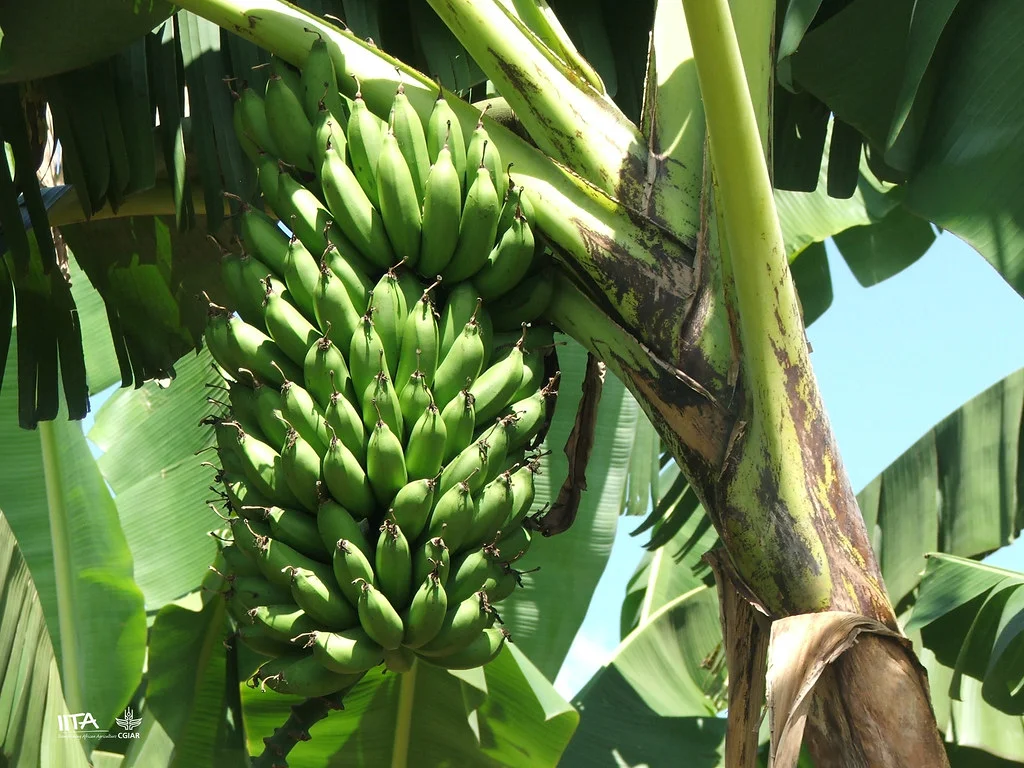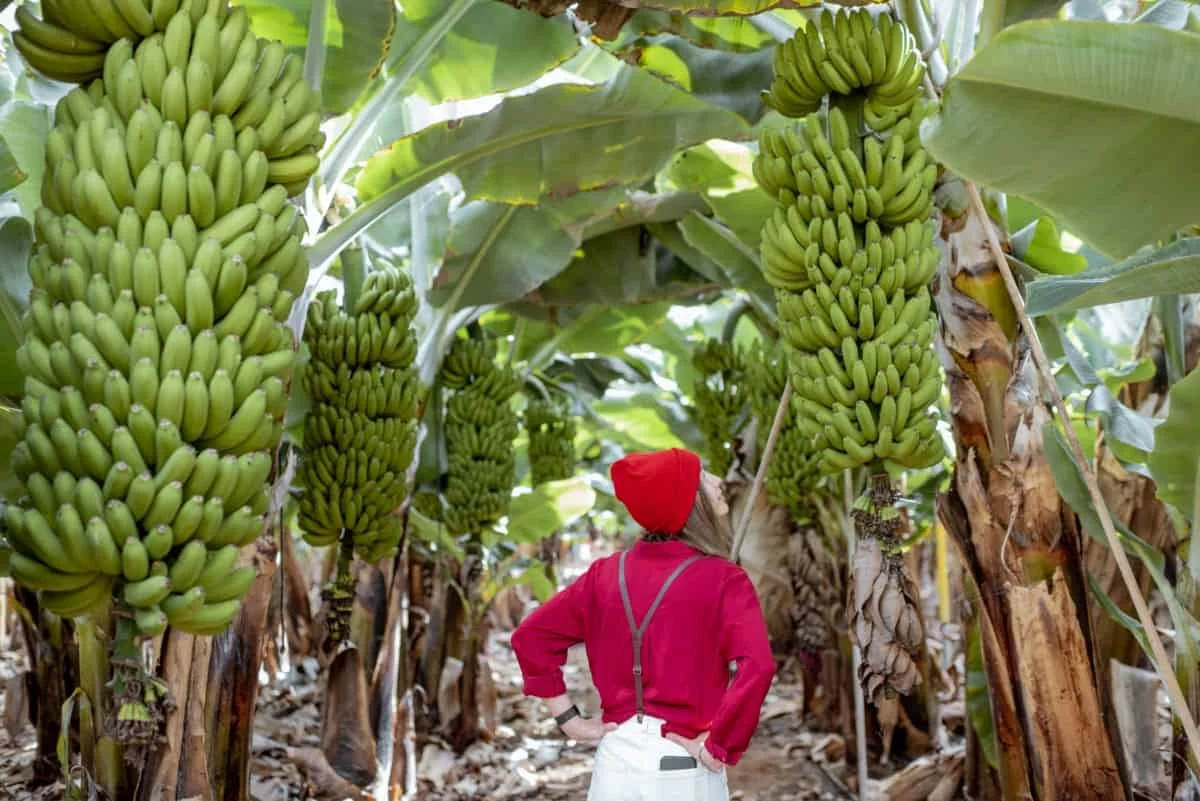Banana farming is a significant agricultural activity in Kenya, contributing to the livelihoods of many smallholder farmers.
The banana industry has grown over the years due to increasing local and international demand, driven by bananas’ nutritional value and economic potential. This blog explores the various aspects of banana farming in Kenya, including its importance, farming techniques, challenges, and future prospects.
Overview of Banana Farming in Kenya
Banana farming in Kenya dates back several decades, with bananas being a staple food for many communities. The crop is grown in various regions, including Central, Eastern, Western, and parts of Rift Valley.
Smallholder farmers dominate the sector, with farm sizes ranging from a few plants to several acres. Bananas are cultivated for both domestic consumption and commercial purposes, with markets extending to local and regional markets.
Economic Importance of Banana Farming
Banana farming plays a critical role in Kenya’s economy. It provides a source of income for farmers, contributes to food security, and supports various industries.
The banana value chain involves several players, including farmers, traders, processors, and exporters. The crop also supports rural economies by creating employment opportunities in farming, transportation, and marketing.
10 Banana Varieties Grown in Kenya
Kenyan farmers cultivate several banana varieties, each with unique characteristics suited to different climatic conditions and market preferences. Here are 10 prominent banana varieties grown in Kenya:
Cavendish Bananas
Cavendish bananas are the most widely grown varieties in Kenya, primarily for export. They are popular due to their sweet taste, long shelf life, and appealing appearance. These bananas are often seen in supermarkets and are favored for their consistent quality.
Plantains
Plantains are a starchy variety of bananas primarily used for cooking. They are a staple food in many Kenyan households, especially in regions where bananas are a significant part of the diet. Plantains are versatile and can be boiled, fried, or roasted, making them a crucial food source.
Apple Bananas
Known for their sweet flavor and small size, apple bananas are popular in local markets. They are often eaten fresh as a snack or dessert. Their sweetness and unique taste make them a favorite among children and adults alike.
East African Highland Bananas (EAHB)

These bananas are also known as matoke and are a staple food in the western regions of Kenya. They are primarily used for cooking and are a key ingredient in many traditional dishes. EAHB bananas are known for their large size and high nutritional value.
Gros Michel
Although not as widely grown as the other varieties, Gros Michel bananas are valued for their rich flavor and creamy texture. They are less common due to their susceptibility to Panama disease, but some farmers still cultivate them for niche markets where their unique taste is appreciated.
Ng’ombe
Ng’ombe bananas are known for their robust size and are often grown for both local consumption and commercial purposes. They have a sweet taste and are versatile, suitable for eating fresh or cooking. This variety is particularly popular in the central and eastern regions of Kenya.
Giant Cavendish
A larger variant of the traditional Cavendish, the Giant Cavendish is also cultivated for its high yield and export potential. It shares similar taste and shelf life characteristics with the standard Cavendish but offers a higher volume of produce per plant.
Pisang Awak
Known locally as ‘Kisubi’, Pisang Awak bananas are favored for their distinct flavor and texture. They can be eaten fresh or used in cooking and are particularly popular in making banana beer and other fermented products in some regions.
Fhia 17
Fhia 17 is a hybrid variety developed for its disease resistance, especially against Black Sigatoka and Panama disease. This variety produces sweet, flavorful bananas that are suitable for both fresh consumption and processing. Its resilience makes it a reliable choice for farmers facing pest and disease challenges.
Goldfinger (FHIA-01)
Goldfinger bananas are another hybrid variety bred for disease resistance and high yield. They are versatile, with a taste that makes them suitable for eating fresh or cooking. Goldfinger bananas are particularly appreciated for their robustness and ability to thrive in diverse growing conditions.
Climatic and Soil Requirements
Bananas thrive in warm, tropical climates with consistent rainfall. The optimal conditions for banana farming include temperatures between 20°C and 30°C and adequate rainfall of about 1000-2500 mm per year.
Irrigation can supplement rainfall in drier regions. Well-drained, fertile soils with a pH of 5.5 to 7.0 are ideal for banana cultivation. The soil should be rich in organic matter and nutrients.
Banana Farming Techniques
Proper land preparation is crucial for successful banana farming. The process involves clearing the land of weeds, shrubs, and previous crop residues, followed by plowing to loosen the soil and improve aeration. Fertilization with organic manure or compost enhances soil fertility.
Bananas are typically propagated using suckers or tissue-cultured plantlets. The planting process includes maintaining an appropriate distance (2.5 to 3 meters) between plants to allow for growth and management.
In addition, dig holes (60 cm deep and wide) and fill them with a mixture of topsoil and compost, and place the sucker or plantlet in the pit and cover it with soil, ensuring the corm is adequately buried.
Effective crop management practices include regular weeding to reduce competition for nutrients and water.
Similarly, apply a layer of organic material around the plants to conserve moisture and suppress weeds. This provides adequate water, especially during dry periods, through drip or furrow irrigation.
In addition, applying fertilizers (organic or inorganic) to supply essential nutrients.
Common pests and banana diseases affecting bananas in Kenya include the banana weevil, which damages the corm and roots, causing plant stunting and reduced yields. Control measures include using clean planting material and applying insecticides.
Nematodes are microscopic worms that attack the roots, leading to poor plant growth. Crop rotation and nematicides can help manage nematode infestations.
Black Sigatoka is a fungal disease that causes leaf spots and reduces photosynthesis. Regular fungicide applications and removing infected leaves are effective control methods.
Banana Bunchy Top Virus (BBTV) stunts plant growth and reduces fruit production. Controlling aphids (the virus vectors) and removing infected plants are essential management practices.
Harvesting and Post-Harvest Management
Bananas are harvested when they reach maturity, typically 8-12 months after planting, depending on the variety and growing conditions. Harvesting involves using a sharp knife or machete to cut the bunch from the plant and carefully handling the bunches to avoid bruising and damage. Proper storage in a cool, dry place extends the bananas’ shelf life. Controlled ripening can be achieved using ethylene gas or placing bananas in a warm, ventilated area.
Challenges of Banana Farming In Kenya
Despite its potential, banana farming in Kenya faces several challenges. Managing pests and diseases requires significant effort and resources.
Erratic weather patterns, prolonged droughts, and floods affect banana production due to climate change.
Farmers often struggle to access markets, leading to post-harvest losses and low prices.
In addition, the availability of disease-free planting materials is a challenge for many farmers, and poor road networks and inadequate storage facilities hinder efficient banana marketing.
Government and Institutional Support
The Kenyan government and various institutions provide support to banana farmers through training and extension services. They also educate farmers on best practices and new technologies.
Subsidies and grants are provided for inputs and infrastructure development. Research and development efforts focus on developing disease-resistant and high-yielding banana varieties.
Market linkages facilitate connections between farmers and markets to ensure fair prices.
Future Prospects of Banana Farming
The future of banana farming in Kenya is promising, with opportunities for growth and development.
Utilizing disease-resistant and high-yielding varieties can enhance productivity. Expanding irrigation infrastructure can mitigate the effects of climate change and ensure consistent production. Processing bananas into products like chips, flour, and beverages can increase farmers’ income.
Tapping into international markets can provide higher returns for farmers. Implementing technologies like drip irrigation, greenhouse farming, and mobile applications for market information can boost efficiency and productivity.
Proper Ways to Store Bananas
Storing bananas properly is essential to maintain their freshness, extend their shelf life, and minimize spoilage. Here are some effective methods for storing bananas at different stages of ripeness:
1. Storing Unripe Bananas
Room Temperature:
Unripe bananas should be stored at room temperature until they reach the desired level of ripeness. Keep them in a well-ventilated area away from direct sunlight and heat sources. Hanging bananas on a banana tree or stand can prevent bruising and promote even ripening.
Separate from Other Fruits:
Bananas produce ethylene gas, which speeds up the ripening process. To prevent premature ripening, store bananas away from other fruits and vegetables that are sensitive to ethylene, such as apples and tomatoes.
2. Storing Ripe Bananas
Refrigeration:
Once bananas are ripe, they can be stored in the refrigerator to slow down further ripening. The skin may turn brown, but the fruit inside will remain fresh for several days. Place ripe bananas in a plastic bag or wrap the stems with plastic wrap to reduce the release of ethylene gas.
Freezing:
Ripe bananas can be frozen for long-term storage. Peel the bananas and place them in an airtight container or a resealable plastic bag. You can freeze whole bananas, banana slices, or mashed bananas, depending on your intended use. Frozen bananas are perfect for smoothies, baking, and other recipes.
Cling Film Wrapping:
Wrapping the stems of bananas with cling film or plastic wrap helps to slow down the ripening process by trapping the ethylene gas emitted by the fruit. This method can keep bananas fresh for a few extra days at room temperature.
3. Storing Overripe Bananas
Refrigeration:
If bananas become overripe, they can still be refrigerated to extend their usability. Although the skin will darken, the flesh inside remains suitable for use in baking, smoothies, and other culinary applications.
Freezing:
Overripe bananas are ideal for freezing. Peel and store them in airtight containers or resealable plastic bags. Overripe frozen bananas are excellent for making banana bread, muffins, and other baked goods.
4. General Tips for Banana Storage
Avoid Moisture:
Excess moisture can cause bananas to rot. Ensure bananas are dry before storing, and avoid washing them until you are ready to eat them.
Hanging Bananas:
Using a banana hanger or tree can prevent bruising and allow for even air circulation around the bananas, reducing the risk of premature ripening and spoilage.
Store in a Cool, Dark Place:
A cool, dark place, such as a pantry, is ideal for storing bananas. Avoid exposure to direct sunlight or heat sources, which can accelerate ripening.
Conclusion
Banana farming in Kenya is a vital agricultural activity with significant economic, nutritional, and social benefits.
Despite the challenges, the sector has immense potential for growth and development.
By adopting improved farming practices, accessing quality planting material, and leveraging government and institutional support, Kenyan banana farmers can enhance their productivity and profitability.
The future of banana farming in Kenya looks bright, with opportunities for expansion into local and international markets, value addition, and technological advancements.




